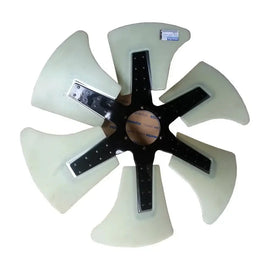Engines power the backbone of construction and industrial projects, ensuring seamless operation in demanding environments. Whether for excavators, bulldozers, loaders, or cranes, selecting the right engine parts for heavy equipment is crucial for performance, durability, and efficiency. Likewise, engine parts for construction equipment must be robust enough to handle extreme workloads while maintaining reliability over time.
The Role of Engine Parts in Heavy Equipment Performance
Heavy machinery relies on a complex system of components working in unison. Engine parts such as pistons, cylinders, fuel injectors, and crankshafts determine power output and fuel efficiency. A well-maintained engine enhances productivity, reduces downtime, and extends the lifespan of equipment.
For construction businesses, investing in high-quality engine parts for construction equipment ensures that machines perform at peak efficiency, even in the most challenging conditions.
Key Engine Components for Heavy Equipment Durability
The durability of engine parts for heavy equipment depends on the quality of materials and precision in manufacturing. Some critical components that contribute to the longevity of an engine include:
- Cylinder Liners: Prevent wear and tear on engine cylinders by providing a durable surface for piston movement.
- Pistons and Rings: Maintain compression and fuel efficiency while withstanding high temperatures and pressures.
- Fuel Injectors: Regulate fuel delivery, ensuring the right air-fuel mixture for optimal combustion.
- Camshafts and Crankshafts: Control valve timing and convert piston movement into rotational power.
Using premium-grade engine parts for construction equipment minimizes the risk of unexpected failures and expensive repairs.
Why High-Performance Engine Parts Are Vital for Construction Equipment
Construction sites operate under extreme conditions, including dust, heat, and continuous heavy loads. To prevent engine failures, operators must use engine parts for construction equipment that can withstand these harsh environments.
Components such as turbochargers, air filters, and cooling systems play a crucial role in protecting the engine from excessive wear. Regular maintenance, including timely replacement of worn-out parts, ensures machinery operates smoothly and efficiently.
The Impact of Engine Parts on Fuel Efficiency and Emissions
Modern engine parts for heavy equipment are designed to enhance fuel efficiency and reduce environmental impact. Fuel injectors, EGR valves, and exhaust systems help optimize combustion, leading to lower emissions and reduced fuel consumption.
By upgrading to advanced engine parts for construction equipment, businesses can align with industry regulations while cutting operational costs. Maintaining proper engine function also prevents excessive fuel wastage and reduces carbon footprint.
Routine Maintenance to Extend the Lifespan of Heavy Equipment Engines
Proper maintenance ensures the longevity of engine parts for heavy equipment and prevents costly downtime. Some essential maintenance practices include:
- Regular Oil Changes: Keeps engine components lubricated and prevents wear.
- Cooling System Maintenance: Avoids overheating by ensuring proper coolant circulation.
- Air and Fuel Filter Replacement: Prevents contaminants from entering the engine, improving efficiency.
- Inspection of Seals and Gaskets: Prevents leaks that could lead to engine failure.
By following a strict maintenance routine, construction firms can ensure their engine parts for construction equipment remain in optimal condition.
Conclusion
Sourcing high-quality engine parts for heavy equipment is essential for maintaining productivity and preventing unexpected breakdowns. Construction companies should look for suppliers that offer durable, precision-engineered components tailored to specific machinery requirements. If you’re looking for premium engine parts for construction equipment, visit imaraengineeringsupplies.com to explore a range of durable engine components that keep your equipment running smoothly.

